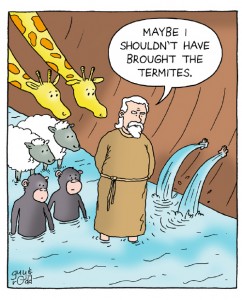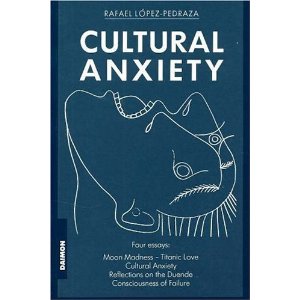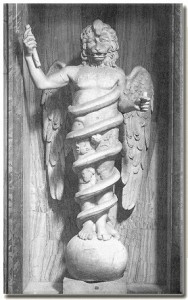
This post continues to look at Sarah Palin’s post-Tucson “blood libel” video.[1] Last week, Mythfire suggested that each of us possesses what Swiss psychiatrist C.G. Jung calls a persona, further defined by analytical psychologist Murray Stein as “the psycho-social identity of the individual.”[2] The persona, or mask, that we wear toward the outside world depends largely on the situation we find ourselves in, especially the expectations the situation makes of us and our expectations or aspirations toward it. In the case of Sarah Palin, one of her personae undeniably is that of the maverick or “mama grizzly,” both of which are variations on the cowboy persona.
In fact, last week the New York Times published an illuminating article on this very theme. The title of the article is “Cowgirl Country,” although more telling is the title that appears on the browser tab once the article is opened: “Only Cowgirls Run for Office.” Providing multiple examples from the last hundred years or so of U.S. political history, author Rebecca Traister makes a convincing case for her overall argument:
“But while American history has known other kinds of male authority — we’ve had Yankees and peanut farmers, policy wonks and orators, haberdashers and horn-dogs — we have made considerably less imaginative space for ways in which women can persuade us of their ability to lead.”
Unfortunately, then, the primary way for women to persuade present-day Americans “of their ability to lead” is to put on the persona of sharp-shooting, tough-talking, blood-drawing “cowgirl,” a fact that Palin and other contemporary female politicians know all too well.[3]
If the persona is the mask we put on to match the expectations of the outer world, what becomes of those innermost aspects of ourselves which comprise our unique hopes, aspirations, and calling? What becomes of our desire for importance, worth, and value? Similarly, what becomes of those aspects deemed by society or ourselves to be unacceptable, impolitic, unworthy, or sinful? The answer is two-fold: these aspects or energies are repressed into what analytical psychology calls the unconscious, more specifically the shadow, and they not infrequently are then projected onto others in the outside world.
Our unconscious inner potentialities and/or wishes for greatness are projected most often onto elders or public figures whom we look up to. Political or religious leaders. Athletes. Celebrities. Stars. The projecting of one’s “golden shadow” onto another individual is experienced most vividly in those moments when one is “star struck.” Toward this end, it is very important that we become aware of the difference between “role models” and “idols” and to what degree we expend our time and energy on various types of idol or celebrity worship. The larger portion of our time and energy is better spent realizing our own unique value in this world.[4]
Of course, just as we often worship or lionize other individuals we also frequently demonize them with equal psychic force. We see in them that which we refuse to see or acknowledge in ourselves. Forbidden desires and impulses, fears, disgust, shame, envy, “impure” thoughts, feelings of inferiority and worthlessness, and more. We criticize others for characteristics which we either fear we also possess and/or wish deep down that we could fully express in our own lives. The psychological principal of projecting the dark shadow underpins the saying “the pot calling the kettle black” and the Biblical injunction “And why beholdest thou the mote that is in thy brother’s eye, but considerest not the beam that is in thine own eye?”[5]
The “mote” in “thy brother’s eye” brings up another important point. In psychological parlance, we hang or project our shadow, dark or golden, onto another person because that person has a “hook” onto which we can hang it. Each of us has hooks, or “motes,” i.e. potentials for greatness and for darkness, with which others all too readily identify or even amplify via their own shadow energies. Mythfire wonders, for example, to what extent the “phenomenon” known as Sarah Palin may on some level be understood as being comprised of equal parts positive/golden shadow projection from people who are attracted to her and negative or dark shadow projection from those who are just as repelled by her. This is one reason why in politics and in all forums of leadership we must strive for substance over style – awareall the while just how susceptible we are to the latter’s projection-making power.[6]
When we create a persona for ourselves what we are in essence saying is “I am this, not that” and the “not that” gets projected as shadow onto others. By separating pure from impure in this manner we also create an “us versus them” dualistic way of seeing the world. Pure good versus (im)pure evil. Every cowboy or cowgirl needs his/her angry “Injun” or outlaw to fight and bring to justice. Superman needs his Lex Luthor. Cain needs his Abel. (And, of course, Austin Powers needs his Dr. Evil — both tellingly played by the same actor!). In short, myth, literature, television, and cinema provide countless examples of this dynamic at work, one of the most famous examples being Robert Louis Stevenson’s The Strange Case of Dr. Jekyll and Mr. Hyde.
Look for a moment at phrases used by Sarah Palin in her video to describe the shootings in Tucson:
- “…a single evil man took the lives of peaceful citizens that day.”
- “Acts of monstrous criminality stand on their own. They begin and end with criminals who commit them, not collectively with all the citizens of the state…”
- “…the despicable act of this deranged, apparently apolitical criminal.”
- “America must be stronger than the evil we saw displayed last week.”
Mythfire is not contesting the fact that the shootings were indeed “despicable” and even “evil.” However, is it not possible to separate our feelings toward the acts from those toward the actor, in this case the shooter? Can we not, should we not, feel compassion and empathy toward him and others like him especially if mental illness is at work as is generally suspected? One of the dangers with shadow projection, then, is that we distance ourselves from any connection or relatedness to others, and in so doing we also distance ourselves from a sense of personal as well as communal responsibility. [7]
Palin’s reference to the United States as “our exceptional country […] a light to the rest of the world” will be taken up in a later post. For now this phrase also serves to exemplify the tone of purity which opposes that of (evil) impurity throughout the video. As Stein notes about the persona and shadow: “the one complements – or more often opposes – the other. Persona and shadow are usually more or less exact opposites of one another, and yet they are as close as twins.” [8]
In pointing out Palin’s “shadow” as seemingly displayed in this video, there is a real risk that we will continue the “us versus them” shadow projection which we should strive at all costs to avoid. In other words, rather than put Palin in the spotlight for her apparent shadow, we must “own our own shadow,” working to the best of our ability on the “beam” in our own eye rather than on someone else’s “mote.” Furthermore, as we have seen, this is not undertaken through a process of purification and a notion of achieving “perfection” but rather through the recognition and then integration of one’s own shadow. The ideal is not to become perfect but more whole.
One example of what this whole-making process might look like could involve asking ourselves the following questions: “what unlived potentials, both positive and negative, am I projecting onto people in the community around me, onto characters on television, onto celebrities and sports or political figures?” Also, take note of when you are experiencing and expressing, especially spontaneously, strong positive or negative emotions toward these figures and ask yourself, “What does it say about me that I’m experiencing these strong emotions toward these individual figures? How might I give these emotions expression and form in my life in constructive, not destructive, ways?” Most if not all of the emotions, fears, and desires held by individuals are part of the human experience and not inherently evil or destructive. It is how they are unconsciously expressed and lived (or repressed and unlived) that makes them so.
Finally, another important question to ask in light of this and the last post is “what shadow am I potentially creating when I put on the persona of Teacher, Scholar, Accountant, Artist, Politician, Father, Mother, Cowboy/Cowgirl, etc.?” In actuality this means asking oneself, a) “what shadow is my chosen persona possibly projecting onto others, making them out to be of lesser value or quality than I?” and, just as important, b) “what hook does my chosen persona with its characteristic behaviors create onto which others might hang their shadow?” [9] As has been suggested above, a related additional question, then, is “how might I strive in the way I live my life to put substance before style?” If we fully live out these and other questions like them, we are well on our way to becoming more whole and healthy individuals – and by extension more whole and healthy communities.
——
About the Cartoon: The above Brevity cartoon humorously describes the shadow at work. At one time or another we have all asked ourselves a question like that tacitly suggested by the cartoon: “Why did God have to create termites?!!?” After all, they are pests, generally taking up residence out of sight in dark hard-to-get-to places. From there they eat away at what we hold most dear, i.e. our homes and possessions. And yet, quick research for those of us who don’t know better reveals that termites play an important ecological role in “nutrient recycling, habitat creation, soil formation and quality and […] as food for countless predators.” They are even being investigated as a renewable source of power and cleaner energy for human consumption. In a similar manner the shadow, i.e. those aspects of ourselves we repress and/or project onto others because we find them unacceptable, will eat us up from the inside if allowed to remain unconscious. However, if lived consciously and constructively the shadow may provide us with creative energy, power, and in other ways facilitate an “ecological” balance in our own psyche or soul.[10]
——
Next Tuesday: The Myth of Blood Libel III (“The Shame Game”)
[1]If readers wish to revisit Palin’s “America’s Enduring Strength” video, they will find it embedded halfway down the previous Mythfire post.
[2] Stein, Murray. Jung’s Map of the Soul: An Introduction. Chicago: Open Court, 1998: 109.
[3] http://www.nytimes.com/2011/01/23/magazine/23fob-wwln-t.html?_r=1&ref=magazine. Traister’s article is to be recommended as a good example of “mythology in contemporary society,” with cowgirl being the author’s myth of choice. Every time we don a persona we are taking on a role imbued with archetypal or mythic energy. (Teacher. Athlete. Artist. Politician. Physician. Accountant. Father. Mother. Etc.) Toward the end of the article Traister even laments the fact that the cowgirl myth or persona has been given greater importance than “other kinds of mythic female strength rooted in collaboration, friendship, and support.” Finally, Stein shows that the persona is not merely needed for show or persuasion but “survival.” In the case presently under discussion, the must-have persona for women wanting to survive in the political arena is that of “cowgirl.” See Stein 116-117.
[4] See Jungian analyst Robert Johnson’s Inner Gold: Understanding Psychological Projection for more on the golden shadow. Johnson’s Owning Your Own Shadow: Understanding the Dark Side of the Psyche serves as a better introduction to the shadow along with Robin Robertson’s Your Shadow.
[5] Matthew 7:3, King James Version.
[6] Newt Gingrich apparently referred to Palin as a “phenomenon” in an interview following her Tucson video. See: http://politicalticker.blogs.cnn.com/2011/01/18/palin-needs-to-be-more-careful-gingrich-says/.
[7] Perhaps experts studying the shooter’s psychological make-up in the future will find that from a psychoanalytic perspective he is to an extent an extreme example of what these posts have been discussing: an individual who overidentifies with a persona, i.e. cowboy hero, who projects his own dark or evil shadowy aspects onto another, i.e. Rep. Giffords, and unfortunately sets out to rid himself and others of that (mis-)perceived and separate “evil.” Also, in terms of the personal and communal responsibility in dealing with mental illness, Mythfire recommends the engaging and exasperating program Minds on the Edge: Facing Mental Illness. One of the distinguished panelists, Elyn R. Saks, is the author of The Center Cannot Hold: My Journey through Madness. It seems fairly evident post-Tucson that when an individual cannot “hold the center” of his or her sanity we as a society must find ways of holding it for them. Whether one of those ways is involuntary institutionalization is still hotly debated. The hour-long program can be watched in full here: http://www.mindsontheedge.com/watch/fullprogram/.
[8] The oft-quoted line associated with Palin “I can see Russia from my house,” although a parody of what Palin originally said may certainly along with her original statement be understood in the same terms we’ve been discussing here, i.e. persona, shadow, hook, and projection, in this case Palin projecting onto her Alaskan neighbor, Russia. For the background on these statements, see: http://newsbusters.org/blogs/brad-wilmouth/2009/11/18/abc-brings-i-can-see-russia-my-backyard-palin-interview.
[9] See the Johnson and Robertson books noted above for more ways of engaging in whole-making shadow work.
[10] See http://en.wikipedia.org/wiki/Termite as one source with more on termites. For more Brevity comics see http://www.guyandrodd.com/ or http://www.facebook.com/brevitycomic. Finally, another significant way of working on or with one’s shadow is to pay attention to one’s dreams. In his books A Beginner’s Guide to Jungian Psychology and Your Shadow analytical psychologist Robin Robertson points out that the shadow may make itself known in varying dream figures. These include villainous, evil, or despicable human figures of the same sex as the dreamer or perhaps half-human figures such as vampires or werewolves. If this doesn’t wake the dreamer up to his/her shadowy self, according to Robertson this is what frequently happens next: “If we are resistant enough to the call from the unconscious, our dreams may bypass even the partial humanity of such figures and produce repulsive nonhuman figures: especially spiders and bugs of all sorts.” In this spirit and in light of the above cartoon, one wonders if Noah woke up one morning from a nightmare involving termites. (Robertson, Robin. Your Shadow. Virginia Beach, VA: A.R.E. Press, 1997: 22.)








